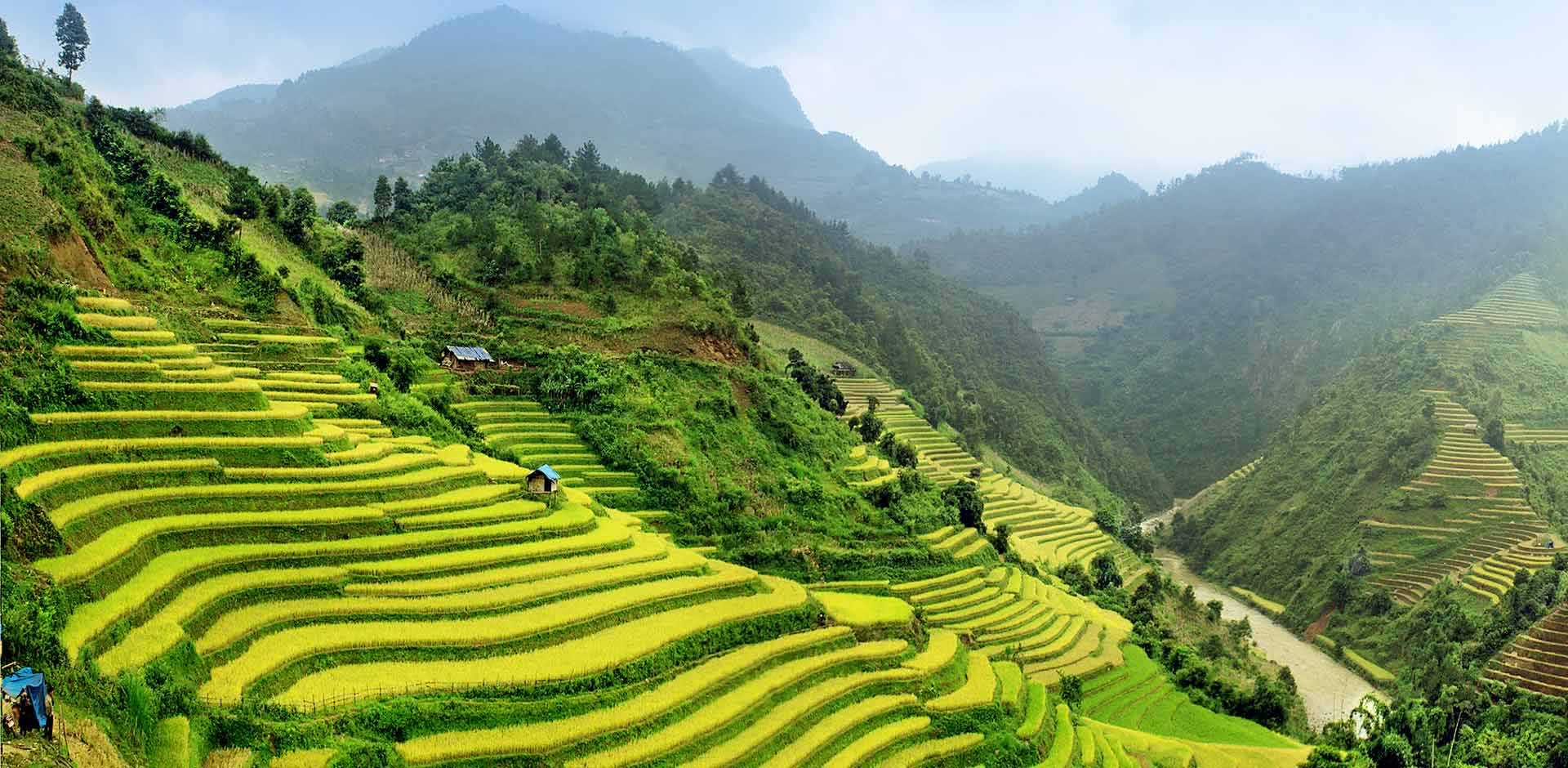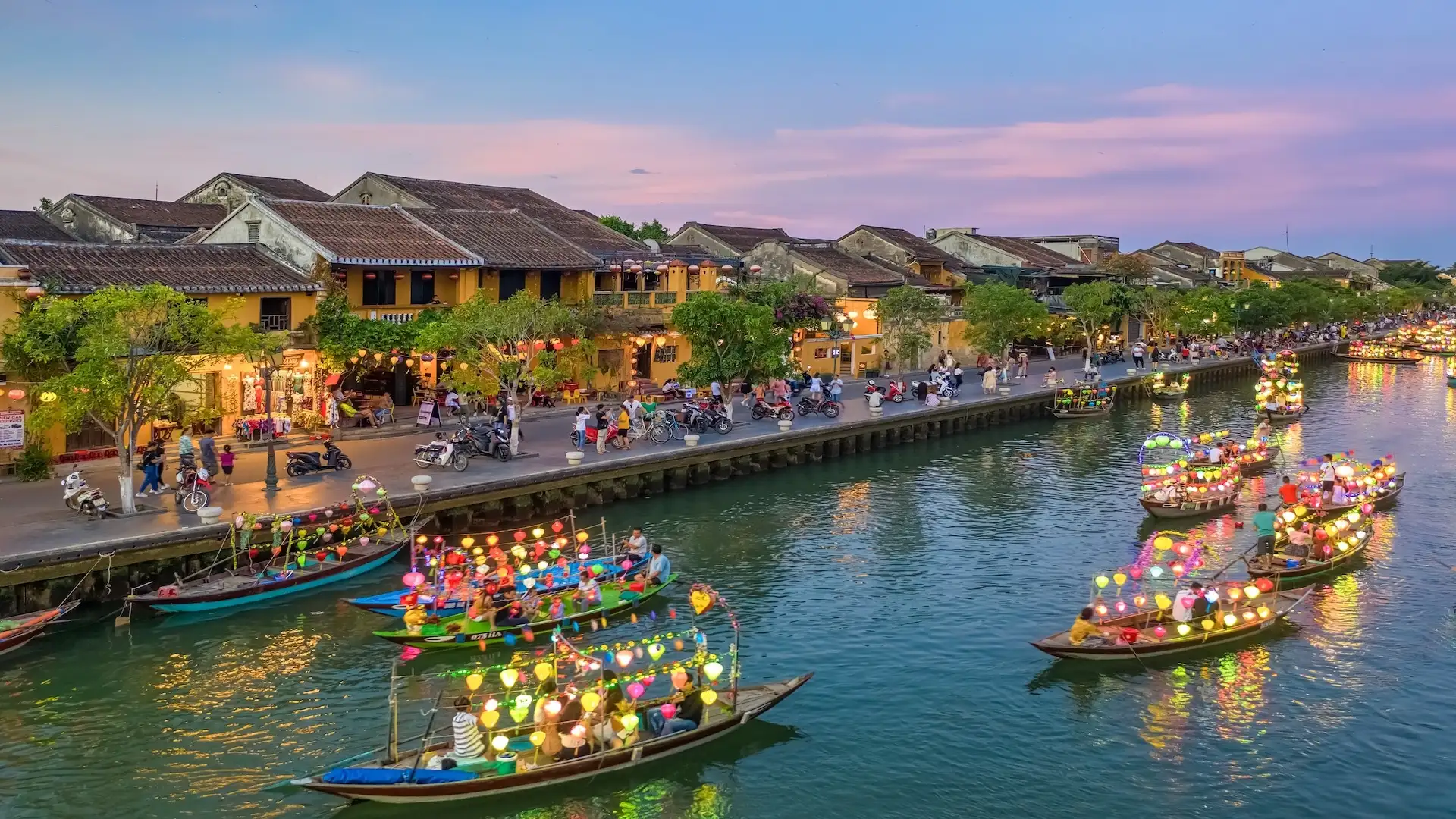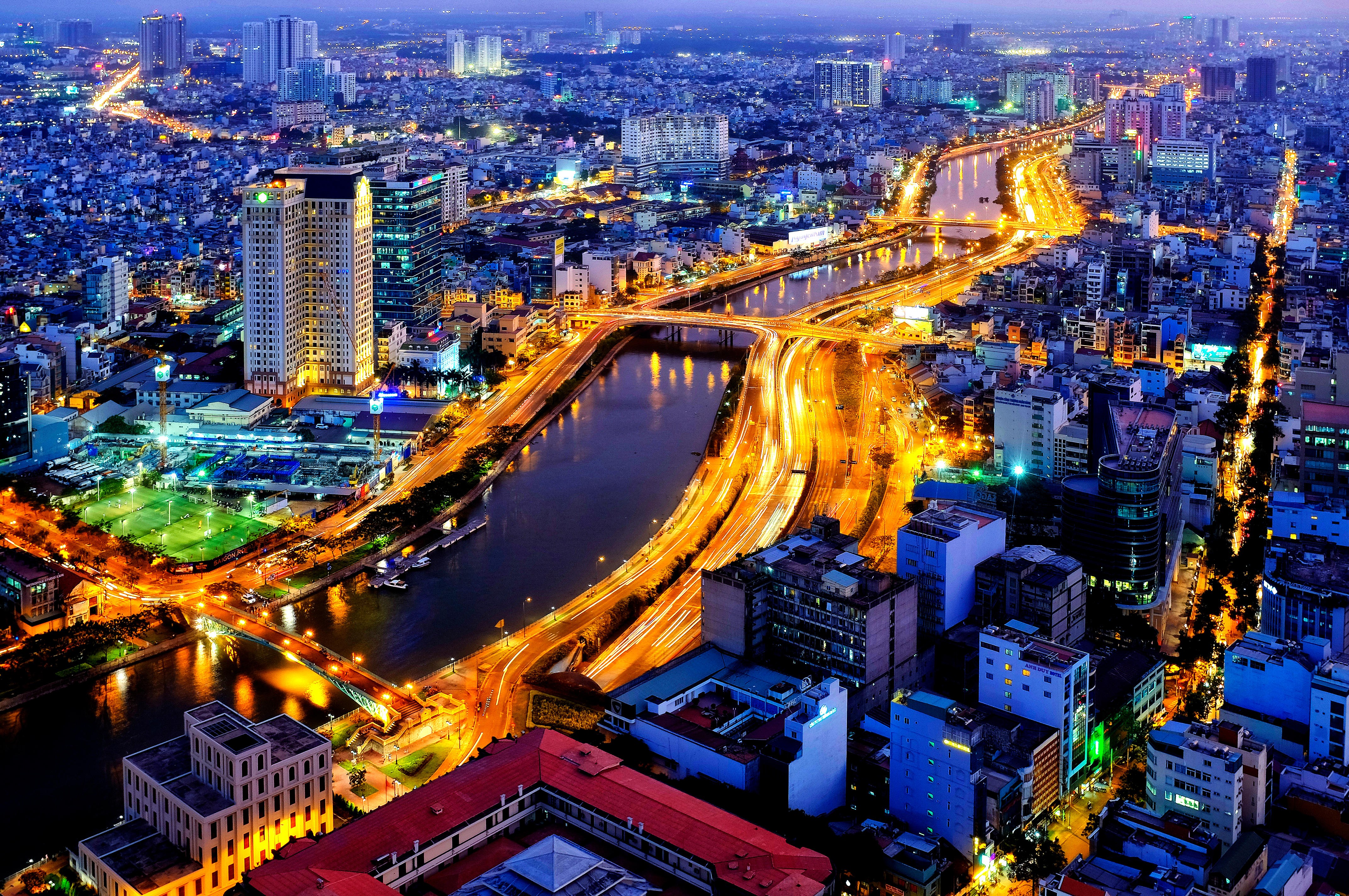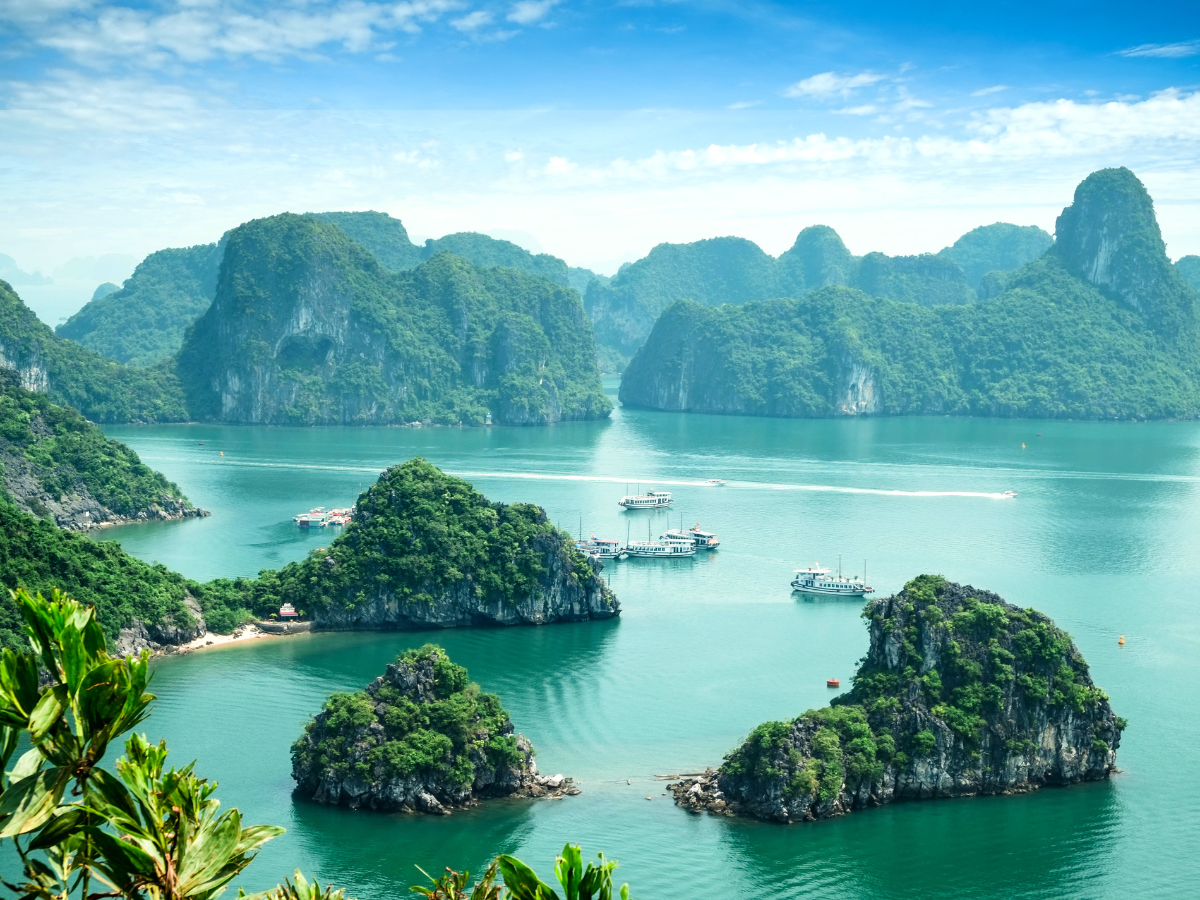Vietnam is a photographer’s dream, with diverse landscapes ranging from misty mountains and lush terraced rice fields to vibrant cities and pristine beaches. This guide is for travelers and photography enthusiasts looking to capture the soul of Vietnam in their photos. It goes beyond just naming the most photogenic spots and focuses on what makes them unique, how to get the best shots, and some insider tips that will elevate your photography experience.
1. Ha Long Bay: The Emerald Jewel of Vietnam
Why It’s Instagrammable:
Ha Long Bay is one of the most iconic destinations in Vietnam, known for its 1,600 limestone islands and emerald-green waters. The dramatic karst formations and floating fishing villages make for stunning shots, especially during sunrise and sunset when the light creates magical hues on the water.
Best Photo Locations:
- Sunrise/Sunset: Capture the golden light reflecting off the water or the silhouettes of boats against the setting sun.
- Ti Top Island: Hike to the top of the island for a panoramic view of Ha Long Bay’s karsts, which is a perfect aerial shot.
Photography Tips:
- Golden Hour: The best time for photos is during the golden hour (early morning or late afternoon) when the light is softer, and the water has a beautiful glow.
- Use a Polarizer Filter: This helps reduce the glare on the water and brings out the vibrant colors of the sky and karsts.
- Drone Photography: If you have a drone, Ha Long Bay is one of the best places to get aerial shots. However, make sure to follow local regulations when flying drones.
Value Tip:
Many tourists take boat tours, but to capture unique shots, try booking a private boat or kayak for a more intimate experience with the landscape.
2. Sapa: A Photographer’s Dream for Natural Beauty
 Why It’s Instagrammable:
Why It’s Instagrammable:
Sapa’s terraced rice fields and towering mountains offer stunning opportunities for landscape photography, especially in the harvest season when the fields are golden. The ethnic minority villages, like the H’mong and Tay, provide a chance to capture vibrant cultural life.
Best Photo Locations:
- Mu Cang Chai Rice Terraces: Best photographed during the harvest season in late September, when the fields are golden.
- Fansipan Mountain: Capture a panoramic view of the region’s sweeping valleys and surrounding peaks.
Photography Tips:
- Clouds and Mist: Sapa is known for its misty mornings, which can create ethereal, otherworldly shots. A telephoto lens will help you zoom in on villages peeking through the mist.
- Cultural Photography: When photographing locals, ask permission first. A small gift or gesture of respect goes a long way in making connections.
Value Tip:
Spend a day trekking through the rice fields, not only for amazing photographs but also to experience rural life. The more time you spend in nature, the more you’ll be able to find hidden gems for your shots.
3. Hoi An: Timeless Charm and Lantern-Lit Nights

Why It’s Instagrammable:
Hoi An’s UNESCO World Heritage Old Town, with its narrow streets, well-preserved colonial architecture, and colorful lanterns, offers the perfect setting for magical night-time photography. The town’s streets look different every time of day, from the quiet morning light to the vibrant evening lantern glow.
Best Photo Locations:
- Old Town Streets: Capture the narrow lanes lined with ancient architecture, shops, and locals wearing traditional Ao Dai dresses.
- Lantern Festival: Hoi An’s monthly Lantern Festival, which happens on the 14th day of each lunar month, is an opportunity to capture the town’s vibrant lanterns floating in the river and lighting up the streets.
Photography Tips:
- Night Photography: For great nighttime shots, use a tripod to steady your camera and capture the beautiful interplay of lantern light and reflections in the river.
- Golden Hour: The soft light before sunset or right after sunrise creates a serene atmosphere for street shots.
Value Tip:
Consider taking a cooking class in Hoi An, where you can learn about local cuisine while snapping shots of the colorful market and lively cooking scenes for a unique cultural photo experience.
4. The Mekong Delta: A Living Landscape

Why It’s Instagrammable:
The Mekong Delta is often referred to as the “Rice Bowl” of Vietnam. Its lush waterways, floating markets, and traditional boats offer a distinct, vibrant atmosphere perfect for capturing the unique rhythm of rural life in Vietnam.
Best Photo Locations:
- Cai Rang Floating Market: Capture the hustle and bustle of local traders selling fruits, vegetables, and fish from their boats at sunrise.
- Waterway Villages: The canals and stilted houses offer intimate glimpses of life along the river.
Photography Tips:
- Shoot at Dawn: The early morning light provides soft tones, and you’ll catch the market at its most vibrant with locals bustling about.
- Wide-Angle Lens: For capturing the wide river landscapes and the crowded floating markets, a wide-angle lens is essential to bring out the scale of the scene.
Value Tip:
Take a boat tour through the smaller tributaries of the Mekong River. They are less crowded, giving you a more authentic and peaceful experience to photograph life along the water.
5. Phong Nha-Kẻ Bàng National Park: Majestic Caves and Limestone Karsts

Why It’s Instagrammable:
Phong Nha-Kẻ Bàng is home to some of the world’s largest and most spectacular caves, including Son Doong, the largest cave in the world. The dramatic limestone karsts and lush forests make this a hidden gem for photographers.
Best Photo Locations:
- Paradise Cave: Capture the dramatic stalactites and stalagmites inside one of the longest dry caves in Vietnam.
- Phong Nha Cave: The boat trip through Phong Nha Cave is a great opportunity to capture the stunning cave formations and river reflections.
Photography Tips:
- Low Light Techniques: Inside the caves, you’ll be dealing with low light. Use a tripod for long exposure shots and a fast lens (f/2.8 or faster) to reduce motion blur.
- Wide-Angle Lenses: These will help capture the vastness of the caves and the surrounding jungle.
Value Tip:
Many caves in this region are less visited compared to Ha Long Bay, so take the time to visit the quieter ones like the Tu Lan Cave System for incredible, untouched photo opportunities.
6. Ho Chi Minh City (Saigon): A Dynamic Urban Jungle

Why It’s Instagrammable:
Ho Chi Minh City is the pulse of modern Vietnam, offering a dynamic fusion of colonial architecture, high-rise buildings, and bustling street life. From rooftop bars to street-side cafes, it offers a wide array of photo opportunities for urban photography.
Best Photo Locations:
- Saigon Central Post Office and Notre-Dame Cathedral: The French colonial architecture offers a beautiful contrast to the fast-paced modern life around it.
- Rooftop Bars: Capture stunning panoramic views of the city skyline, especially at night when the lights come alive.
Photography Tips:
- Capture the Energy of the Streets: Saigon’s streets are filled with energy. A fast shutter speed will help freeze the motion of the constant flow of traffic, from motorbikes to pedestrians.
- Golden Hour & Twilight: The city’s skyline is best captured during golden hour or twilight when the light is soft but the city is still active.
Value Tip:
To really get to know Saigon, take a street food tour at night. The colorful food stalls and lively atmosphere make for fantastic and culturally rich photo subjects.
Additional Tips for Your Vietnam Photography Adventure:
- Bring a Good Camera Bag: Vietnam’s climate can be humid and rainy, so a waterproof camera bag is a must.
- Respect Local Culture: Always ask permission before photographing people, especially in rural areas, to ensure cultural respect.
- Use Lightroom or Photoshop: Editing your photos to enhance the natural beauty of Vietnam will help bring out the colors and textures that make the country so unique.
By planning carefully and following these tips, you’ll be able to capture the true spirit of Vietnam, from its breathtaking landscapes to its rich cultural moments. Happy shooting!





